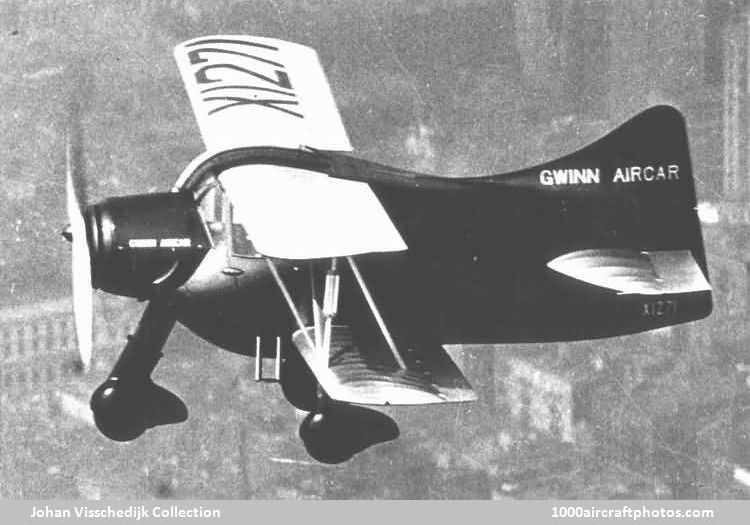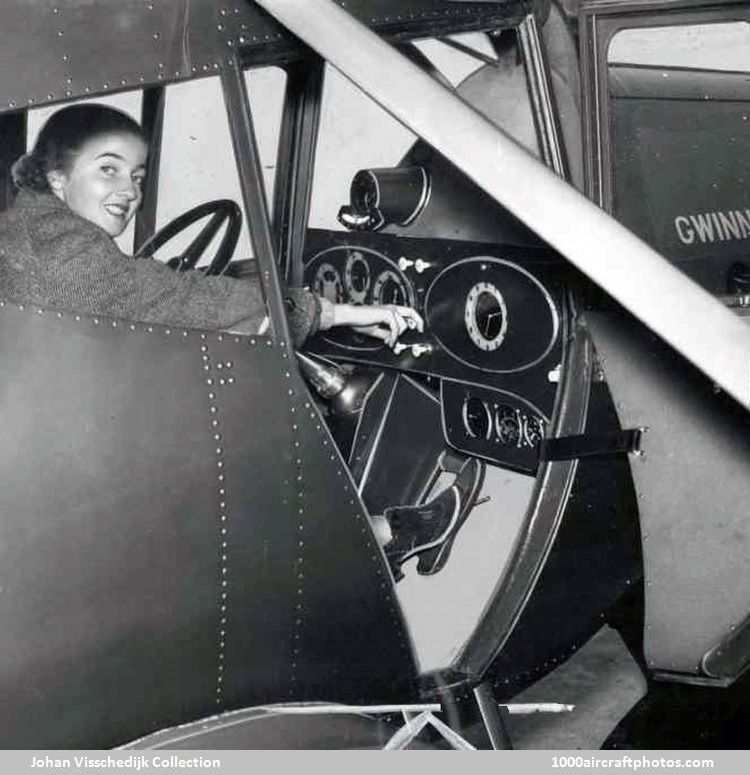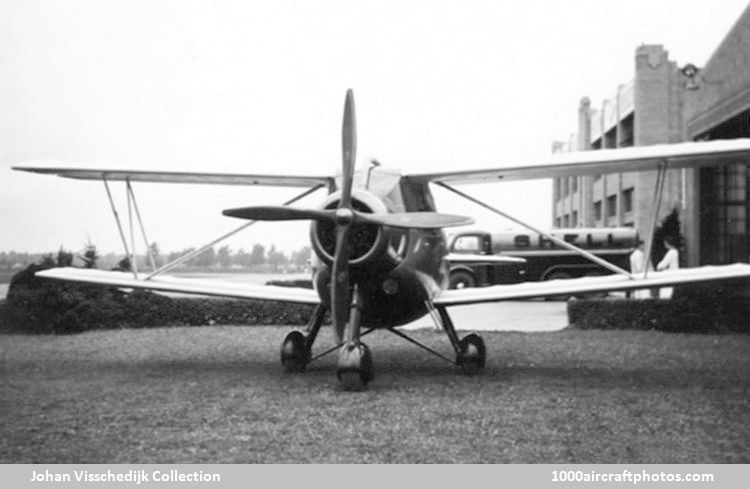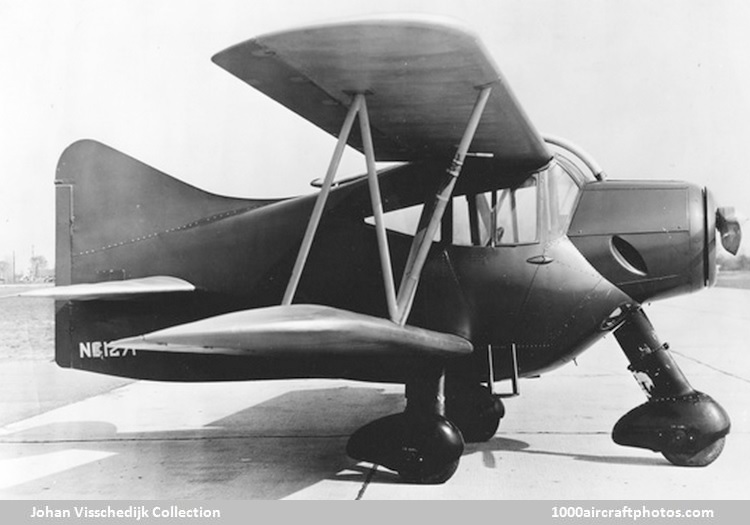09/30/2014. Remarks by
Johan Visschedijk: "Following Consolidated's move to San Diego in 1935, designer Joe Marr Gwinn Jr., always an innovative engineer, patented rights to an 'aircar' design that he had previously offered, without success, to Reuben Fleet. Leaving Consolidated, he formed the Gwinn Aircar Company in Buffalo on September 3, 1935 to produce it.
The Model 1 Aircar was an unconventional side-by-side two-seat cabin biplane with a tricycle landing gear and incorporated many parts from a 1935 Oldsmobile. The fuselage was an all-metal monocoque structure which included the vertical fin, fitted with a trim tab (but no rudder) for directional control.
A large door on either side with an exterior step allowed for easy access to the cabin. The symmetrical wings, braced by 'N' struts on each side, were of
NACA 4418 airfoil and were built up of spruce spars with aluminum ribs. The leading edges were covered with dural metal sheet, the remainder was fabric covered.
Construction took 21 months, from September 15, 1935, to June 11, 1937, and was undertaken by Stanley Dybowski, a tool and metal worker. First displayed at the National Air Races held at Cleveland in September 1937 by Richard K. Bennett, the Aircar was powered by a 90 hp Pobjoy Niagara II seven-cylinder air-cooled radial engine
Initially the Pobjoy engine was driving a large four-bladed Fahlin wooden propeller.
The four-bladed wooden propeller was later replaced by a two-bladed wooden propeller.
Envisioned as an 'everyman's airplane', the Aircar was a two-control aircraft with an automobile-type steering wheel used for turns in the air and for steering the nose wheel on the ground. A floor-mounted accelerator pedal acted as a throttle on the ground and a dash-mounted throttle was used in the air. Two other floor-mounted pedals operated the air brakes (wing flaps) and the main wheel brakes. The elevators only had a total movement of 8.5° and to take off, the aircraft was driven along the ground until sufficient speed was reached (around 55 mph, 89 kmh) then the foot pedal-operated flaps were selected and an instantaneous zoom climb made. To land, a level approach was made with flaps selected and when power was reduced, the Aircar settled into a glide and even touchdown.
Gwinn claimed that this rudderless design was safe for everyone and would not stall or spin. The aircraft's potential was recognized by well-known racing pilot Frank M. Hawks who became vice-president and sales manager for Gwinn. Nancy H. Love, another well-known pilot with Inter City Airlines, Boston, Massachusetts, received a rating of competency in the Aircar in April 1938 and also gave demonstrations.
A second Aircar, the Model 2 (X16921 c/n 502) with a 130 hp Pobjoy Niagara V-7 engine was built and flown in 1938. Engine problems led to the temporary installation of an 85 hp Niagara and on August 23, 1938, Hawks flew the second Aircar to the estate of Edmund Rogers at East Aurora, New York, to meet with a group of potential investors. J. Hazard Campbell took a demonstration flight with Hawks, but after take off from a polo field the Aircar hit power lines and crashed, killing the occupants. That same day, a
CofA for the Aircar was denied (
TC 682 had been pending) and Gwinn, affected by the tragedy, suspended all plans for production.
The first Aircar was sold to Dybowski in June 1942, but reverted to Gwinn in February 1945. Fitted with an 88 hp Niagara III engine, the Aircar was rebuilt by May and relicensed (NC1271) as a single-seater for evaluation flights by the Stout Research Division of Convair. Flights from Stinson Field, Michigan, were made by Donald R. Suchner. Reports indicate that the Aircar was subsequently taken to San Diego and later donated to a school.
Although not a Consolidated design, the basic arrangement was adopted for two experimental 'real' aircars, both monoplanes, the Convair Model 103 and 111. The following data relate to the Model 1 Aircar."



